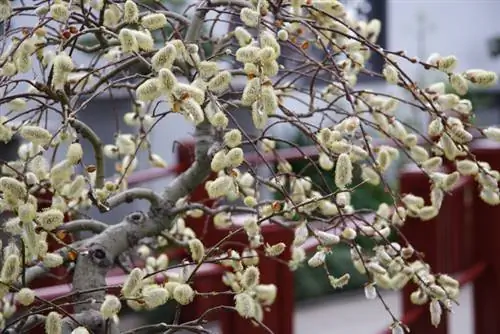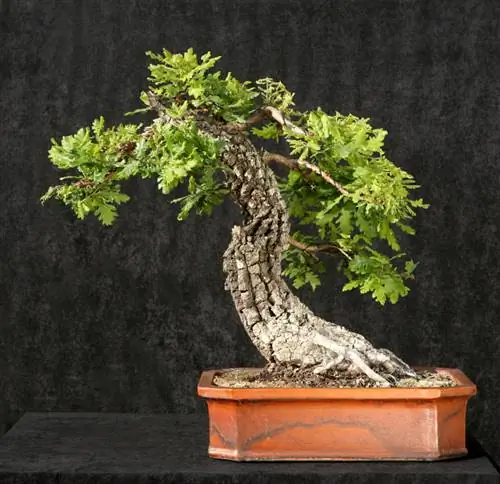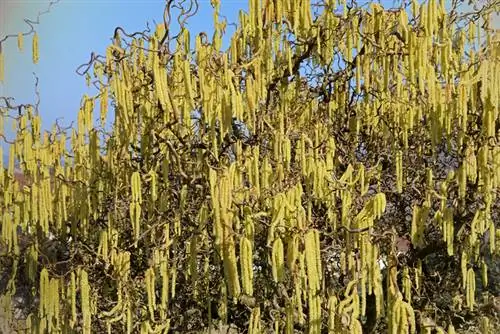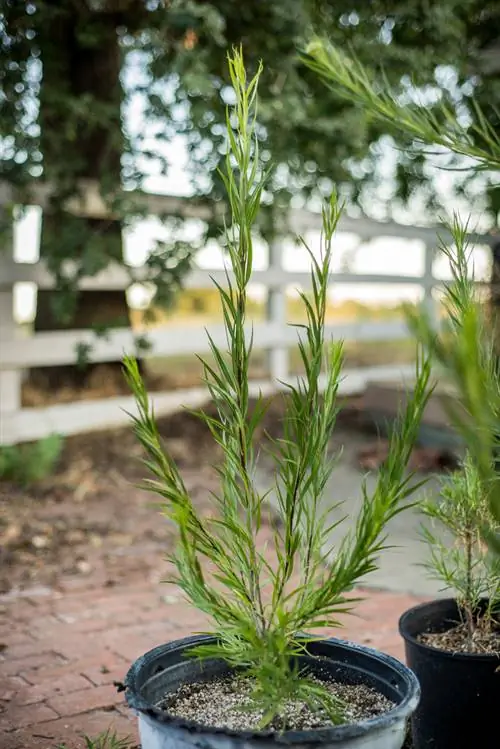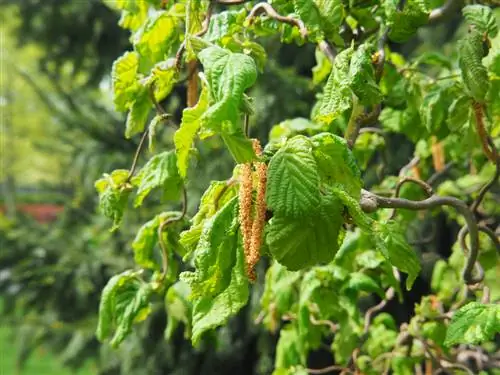- Author admin [email protected].
- Public 2023-12-16 16:46.
- Last modified 2025-01-23 11:20.
If you place the branch of a corkscrew willow as a cutting in the growing bed, it is not mandatory that it will transform into a majestic ornamental shrub. Thanks to its diverse advantages, a Salix matsudana is definitely suitable for outdoor bonsai. Find out how to realize this ambitious plan here.
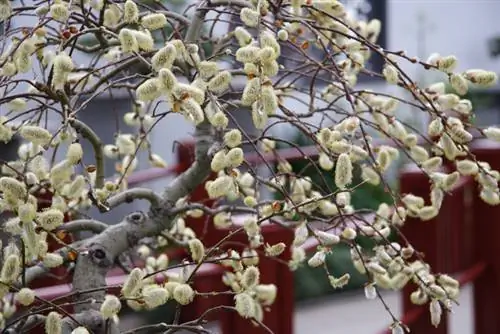
How to grow a corkscrew willow bonsai?
To grow a corkscrew willow bonsai, cut a semi-woody, non-flowering head cutting in early summer and plant it in bonsai substrate in a bonsai pot. Keep the substrate slightly moist and consistently pinch off terminal buds in summer to encourage the growth of side shoots.
How to direct a cutting toward bonsai
At the beginning of its existence as a cutting, the branch is not yet aware that it will lead a life as a bonsai. Cutting and cultivation do not differ from the conventional process of vegetative propagation. How to proceed:
- Cut a semi-woody, non-flowering head cutting in early summer
- Place the scissors under a leaf node at a length of 15-20 cm
- Remove leaves and buds from the lower half of the shoot
So that the small branch looks stylish right from the start, fill the growing substrate into a bonsai bowl. A mix of Akadama and Perlite in a ratio of 3:2 has proven to work well as bonsai soil. Plant the cutting with its leafless part and secure it to the edge of the bowl with a wire so that it does not tip over. Finally, water a little and place the bonsai candidate in the partially shaded, warm window seat.
With the right care you can become a mini tree
A corkscrew willow bonsai spends the warm season on the balcony in a bright, not full sun location. Please keep the substrate constantly slightly moist, as it dries out quickly due to its small volume. From May to September, a bonsai liquid fertilizer (€4.00 on Amazon) keeps growth going. Since the little tree is constantly striving to become a big one, the following pruning program is the be-all and end-all in bonsai cultivation. This is how it works:
Once the shoot has reached the desired height, it is consistently tweezed during the summer. To do this, cut off any additional end buds. In this way, the bonsai is encouraged to develop new side shoots and to strive less upwards. Over time, the trunk increases in thickness and develops an enchanting crown with winding branches.
Tip
As long as the bonsai substrate contains a proportion of organic components, there is a risk of infection with pathogens of fatal diseases lurking in it. Therefore, place the soil in a heat-resistant bowl in the oven at 150 degrees for 20 minutes to reliably destroy viruses, fungal spores and insect eggs.

